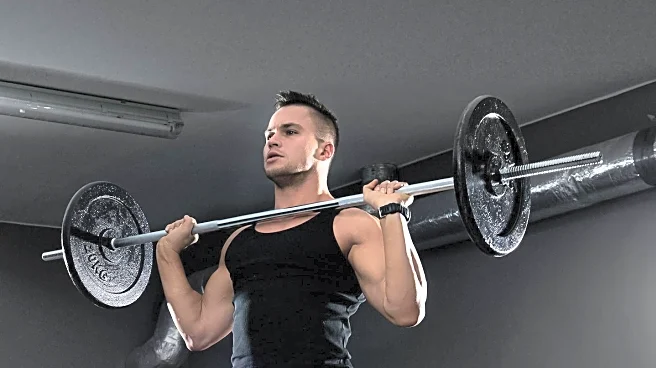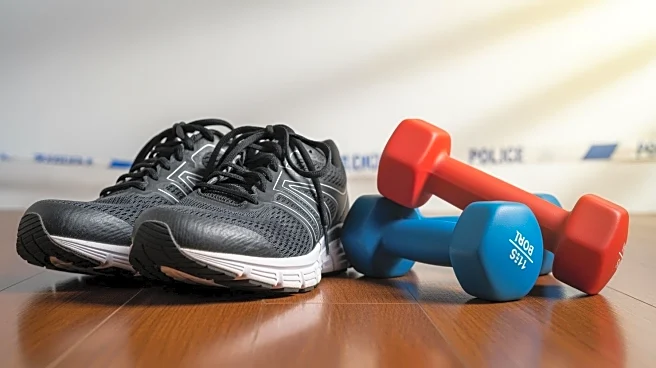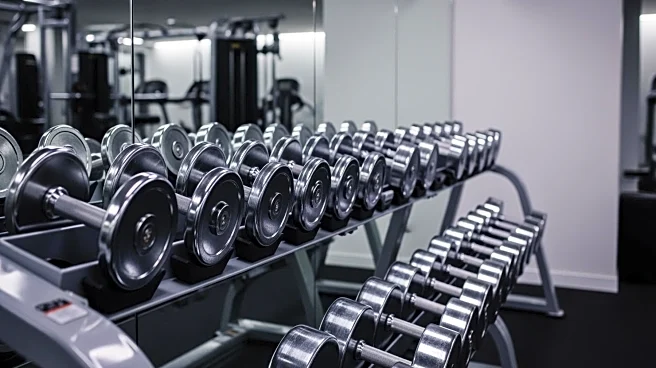What's Happening?
Men's Health has published an article emphasizing the importance of focusing on strength rather than muscle mass to achieve a superhero-like physique. The article highlights a 27-minute workout from Don
Saladino’s Superhero Shred program, which is designed to increase strength regardless of the individual's starting point. The workout includes a dynamic warmup and a series of exercises such as dumbbell split squats, alternating dumbbell bench presses, and V-ups. The program encourages participants to prioritize strength-building exercises, suggesting that increased strength will naturally lead to muscle growth.
Why It's Important?
This approach to fitness challenges the traditional focus on muscle mass, promoting a more holistic view of physical health and strength. By emphasizing strength, individuals may experience improved functional fitness, which can enhance daily activities and reduce the risk of injury. This perspective could influence fitness trends, encouraging more people to adopt strength-based workouts. The shift may also impact the fitness industry, with potential changes in how workout programs are marketed and developed, focusing more on strength and overall health rather than just aesthetics.
What's Next?
As this strength-focused approach gains popularity, fitness enthusiasts and professionals might see an increase in demand for strength training programs. Gyms and fitness centers could adapt by offering more classes and resources that emphasize strength over muscle mass. Additionally, there may be a rise in educational content and workshops aimed at teaching proper strength training techniques. This trend could also lead to collaborations between fitness experts and nutritionists to create comprehensive programs that support strength building through both exercise and diet.
Beyond the Headlines
The emphasis on strength over muscle mass may also have cultural implications, challenging societal norms around body image and fitness. This approach promotes a more inclusive view of fitness, where individuals of all body types can achieve their health goals. It may also encourage a shift in how fitness success is measured, moving away from purely aesthetic standards to more functional and health-oriented metrics.











